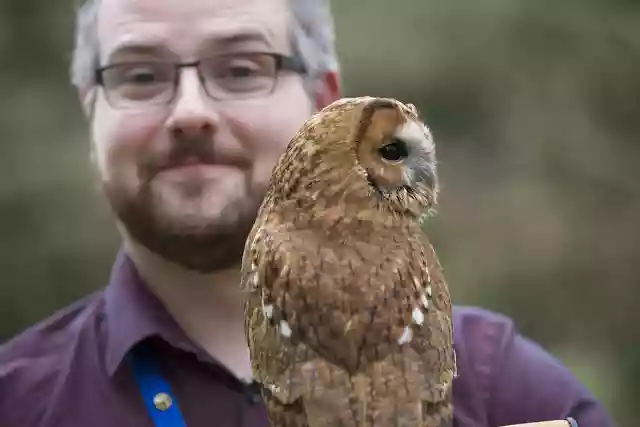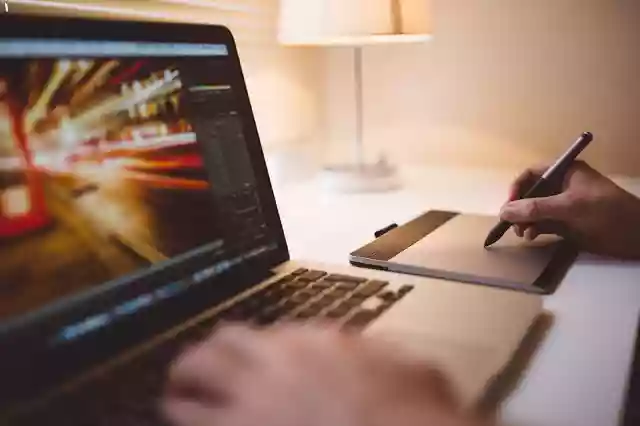- Call us: 01444 237070
- Contact Us
- Stores
- Sign In / Register
-
- Back
- Used Cameras
- Used Accessories
- Used Lenses
- Used Video
- Used Film Equipment
- Used Stock Alert
- Used Blank Test
- Sell or Part Exchange
- Used Clearance
- Recently Added Used Equipment
- Park Picks
- All Used Black Friday Deals
- Faulty
- Trade-In
- Blog
- New in
- Call us
- Contact us
- Stores
- Sign in
- Categories
- Tips & Inspiration
- Reviews
- News
- Events
- Features
- Buying Guides
- Competitions
Digital Photography a Guide for Beginners
A useful free guide to de-mystifying digital cameras
We know that if you want to learn the basics of digital photography it can raise a number of questions. What camera will I need to take the best photos? How do I learn the basics?
This free guide aims to de-mystify some of the terms you will come across when you first buy (and start using) a new digital camera.
So if you don’t know your sensor from your viewfinder, don’t worry – you're not alone, and you'll soon be an expert!

In this article we look at:
- Camera types
- Lens types
- Processing, editing and storing photographs
- Camera specifications
- Resolution
- Understanding sensor types
- LCD screen
- focusing Systems
- Batteries
Camera types - what camera is best for me?
1) Digital SLRs – the established favourite
The go-to choice for both beginners and professionals, the beauty for a beginner is that you can start using ‘auto’ modes, meaning you can learn at a pace that suits you. You’ll soon be wanting to add extras to your camera – new lenses and flashes etc can be added over time to build up a whole kit.
DSLRs tend to offer the best image quality, have fast autofocus systems and rapid shooting modes, while offering the greatest array of manual control options. If you take the time to learn how to use it properly, a DSLR allows for greater creative freedom. If that sounds daunting, don't worry - it takes time, but also learn to love the power of Youtube tutorials - you can find answers to most questions, and they're free!
The ‘SLR’ part means Single Lens Reflex –the view you see when you look through the viewfinder is the same view that your camera records as the final image (through the lens, via a mirror system).
2) Mirrorless - The rising star of digital photography
Mirrorless technology has advanced rapidly over recent years, and are similar to DSLRS in that they tend to have interchangeable lenses and a good level of manual control. As they don’t have mirrors they are smaller, although this means they do not have an optical viewfinder – currently digital viewfinders have some way to go to match optical.

3) Compact cameras – small and convenient
Traditionally a compact camera would be referred to as a ‘point and shoot’ – aimed at being small, portable and user-friendly, and often seen as a ‘holiday camera’. The amount of technology inside them nowadays means you can produce some stunning photos.
Perfect for taking photos on the go, the lenses don’t tend to be interchangeable, so ultimately do not offer the same level of control and flexibility as mirrorless or DSLR systems.
4) Bridge Cameras – an all-in-one that allows for creativity
Aimed as a half-way house between a compact and an SLR, bridge cameras tend to have fixed lenses that cover everything from wide-angle through to telephoto. Sensor sizes are smaller than DSLRs so image quality will not be as high, nor can you change your lenses further down the line.
With the extra control offered over a compact, these can be great cameras to learn with – but beware – if you want to take your photography to the next level, you may end up upgrading to mirrorless or an SLR.
Lens types
If the human brain is the camera body, then the lens is the human eye.
We love lenses, as they really do influence the quality of your photos and can open up whole worlds of creativity. A normal starting point is to get a wide-angle zoom, and then expand your kit out over time.
Wide-Angle lenses
A wide angle has a field of vision bigger than that of the human eye. These are great for landscape, architecture and street photography. A 24-70mm lens is often considered a perfect ‘all-rounder’.
Telephoto lenses
This allows you to zoom in on far away objects – so perfect for your wildlife and sports photography. A 70-300mm is a good starting point.

Prime lenses
Prime lenses are fixed – so you cannot zoom. While this may sound like a limitation, they tend to have ‘wider’ apertures –allowing sharp focus on your subject with a nice blurry background (controlling your depth-of-field).
Because they are fixed, prime lenses tend to have their specialist purposes. So while a 35mm or 50mm may be perfect for street/documentary photography, an 85mm will be better for portraits.
A 50mm f/1.8 is a great starting point for beginners - they are an affordable way to start exploring different styles of photography.
Macro lenses
Macro lenses let you take extreme close-ups of your subject. You can see examples of Macro shots on our Park Cameras Wildlife Day blog.
Fish-eye lenses
For extreme wide angles – perfect for skateboarding/action photography, but these are specialist lenses.
Want to find out more about lenses? Our buying guide delves into more detail.

Processing, editing and storing photographs
Memory
The equivalent of an old-school film – except that once you’ve purchased you can use it time after time! These vary in price according to capacity and writing speed. It’s worth buying a reasonably large card as a one-off purchase when buying a new camera.
Transferring your files
Traditionally you’ll download images by running a USB cable from your cable into your laptop or PC. You can also use a card reader, or if you can simply print your images straight from the memory card – you can find retailers on most high streets that will do this for you.
Most cameras are moving towards Wifi transfer, as well as NFC (near-field communication) and Bluetooth technologies .
Editing
Most cameras allow some basic editing, but software such as Adobe Lightroom or Photoshop should be considered if you want full control over your images.
Image editing tends to be optional at entry level, as you can simply use JPEG pictures to upload onto social media / print etc.
If you are planning on getting the best quality images from your camera, you'll want to shoot in RAW format. Should you shoot in RAW, you'll need to edit your pictures (& convert them to JPEG) before using them.

Camera Specifications – what to consider when buying a new camera
Resolution (megapixels)
Over the years people have become rather obsessed with pixel count – the rule of thumb is the more the merrier. But bear in mind – the higher the count, the larger the file size.
Unless you are printing over A3 size, or regularly needing to crop your images (to ‘zoom in’ on distant subjects, such as for wildlife photography), then 16M pixels plus will be more than sufficient.
Important – the size of the pixels vary according to your sensor size…
Understanding sensor types:
There are 3 main types:
- Full Frame
- APS-C
- Micro 4/3rds
The larger the sensor, the better the quality of the image. It also means that the camera will generally be more responsive in low-light. As well as image quality, the size of the sensor will have an impact on the focal range of your lenses.
So why don't all cameras have a full frame sensor then? There are two main reasons - cost, and size. A smaller sensor allows manufacturers to make smaller cameras.
|
Sensor Size
|
Multiplication factor | With a 50mm lens
|
|
Full Frame
|
0 x
|
50mm
|
| APS-C (Nikon)
|
1.5x
|
75mm
|
|
APS-C (Canon)
|
1.6x
|
80mm
|
|
Micro four thirds
|
2x
|
100mm
|
You can find more detailed explanations here https://blog.parkcameras.com/2013/03/the-full-frame-advantage.html
Cleaning your sensor
Your camera sensor sits within the body of the camera. For cameras with interchangeable lenses, you will want to consider having these cleaned occasionally, as they can get dust on them.

LCD Screen
The LCD screens on the rear of the camera will be used to display the images that you have taken. You can also take your pictures using the screen, although you may struggle in bright sunlight (depending on the camera model of course).
Factors to consider when purchasing include the size of the screen and whether it folds out (vari-angle screens are handy for changing the perspective you shoot from). The quality of the screen will vary from camera to camera.
focusing systems
The quality of the focus system will have a big impact on price and should be factored in when deciding what camera you wish to purchase. At a very high level, the more focus points your camera/lens combination has, the quicker you can find focus, and keep it.
If you are planning on capturing images of fast-moving subjects (wildlife, motorsports, athletics etc) then a decent autofocus is a must. If you want to do this for a living this may mean big money. Saying this, you'll be surprised as to what you can achieve on entry-level cameras - if you apply the right settings.
Batteries
Virtually all modern digital cameras will come with their own rechargeable battery. Performance varies according to camera and conditions (temperature can impact battery life), but we’d suggest a spare battery is well worth the investment, whether you decide on a compact camera or top of the range DSLR.
At Park Cameras we offer several courses to help you start out. If you have any questions - comment below and we'll get back to you!
Share this post:
By Park Cameras on 18/11/2018

Trade in your old equipment
Fast and easy trade in service ensures your old gear is collected efficiently and you are paid quickly! It's very simple to trade in your unwanted photography gear. Just head over to our dedicated Sell or Part Exchange page, fill out the details, and we'll get back to you with an offer for your old gear. Take the cash, or put it towards the cost of your new gear. It's up to you! Find out more
sign up to the newsletter
Keep up to date on the latest photography news, events and offers. Sign up now